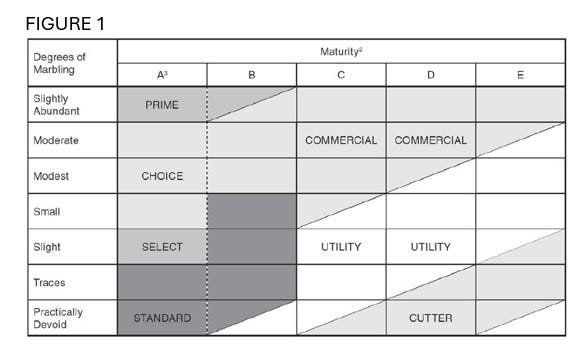Beef quality grading unplugged
Posted on December 18, 2024 by Clint Peck
Source: Farm Progress. The original article is posted here.

Key Takeaways
· Beef quality grading is voluntary and paid for by the meat packer.
· Quality grades are determined by a combination of marbling and maturity.
· Electronic instruments have improved the speed and precision of quality grading.
· “No Roll” carcasses are those the packer might choose not to have graded.
· Carcasses going into certified beef programs are determined and stamped by USDA graders.
Beef producers are the front-line in not only producing cattle to fit quality grade niches, but they’re also key to helping consumers understand how the grading system affects their beef buying decisions.
“It’s critical that we all understand the role quality grades play in producing and marketing beef,” said Christina Bakker, South Dakota State University Extension meat scientist. “It’s increasingly important that we’re able to communicate knowledgeably with consumers, especially as the beef industry moves more and more to consumer-direct marketing.”
Likewise, Bakker adds that the grade of a beef carcass is critical to the producer, since the value received is often directly dependent on how a carcass performs on the packing house rail.
“Grid marketing is the perfect example of why we need to know how grading works,” said Bakker.
Historically, beef was evaluated by meat graders using a mostly subjective assessment. However, recent innovations in the use of electronic instruments have improved the precision of beef grading. Images using cameras and analyzed by computer streamline and augment visual grading. This has contributed to nationwide uniformity in quality grading.
Quality grades—eating characteristics
Beef grades are determined by USDA employees working independently of producers and packers. Inspection for safety and wholesomeness is mandatory and paid for by tax dollars. Carcass grading through is voluntary, and the packer is charged a fee by the USDA for the service.
The USDA Grading Standards include two separate grade designations—quality grades and yield grades. A carcass may be either quality graded, or yield graded, or both.
Eight (8) beef quality grades indicate the expected eating characteristics (tenderness, juiciness and flavor) of the cooked product.
· Prime
· Choice
· Select
· Standard
· Commercial
· Utility
· Cutter
· Canner
The quality grade of a beef carcass is determined by two carcass factors—marbling and maturity.
Marbling, the primary determinant of USDA quality grade, is the amount and distribution of intramuscular fat measured in the ribeye at the 12th rib. Seven common degrees of marbling are shown in Figure 1.
Chronological age has a direct effect on meat tenderness. Maturity is determined by evaluating the size, shape and ossification of the bones and cartilages in the carcass—and the color and texture of the ribeye muscle. As an animal matures, the texture of the lean becomes progressively coarser, and the muscle color becomes darker. There are five (5) maturity scores—for beef carcasses.
A — 9 to 30 months
B — 30 to 42 months
C — 42 to 72 months
D — 72 to 96 months
E — more than 96 months
The relationships between marbling and maturity are shown in Figure 1. For example, a carcass in the “A” maturity group with a “small” degree of marbling would be graded USDA Choice.

Carcasses produced by bullocks (A maturity bulls) are eligible only for the Prime, Choice, Select, Standard and Utility Grades. Bulls over 30 months are generally ineligible for quality grading.
Carcasses can remain ungraded if the beef plant requests. These are designated as “no roll” carcasses. Of course, the eating characteristics of no roll beef may be variable compared to graded cuts.
Finally, carcasses produced for programs like Certified Angus Beef are presented to USDA graders for assessment. The graders determine if the carcasses meet the program’s list of requirements. The program usually pays for the costs associated with the extra level of scrutiny.

.jpg?disable=upscale&width=1200&height=630&fit=crop)


